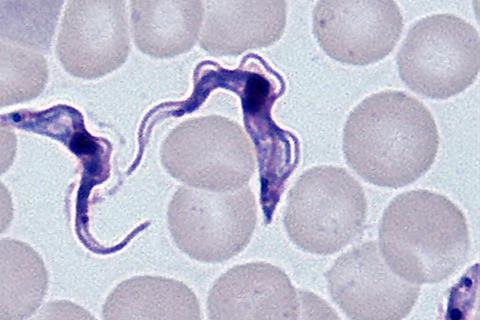Chad is the first country to be acknowledged for eliminating a neglected tropical disease in 2024, becoming the 51st country to have achieved such target globally, and marking the first step beyond the midpoint to the global threshold of 100 countries set for 2030. The 100-country target is one of the four global overarching targets set by the Road map for neglected tropical diseases 2021–2030.
“I congratulate the government and the people of Chad for this achievement. It is great to see Chad join the growing group of countries that have eliminated at least one NTD. The 100-country target is nearer and within reach,” said Dr Tedros Adhanom Ghebreyesus, WHO Director-General.
Sleeping sickness
Sleeping sickness can cause flu-like symptoms initially but eventually causing behaviour change, confusion, sleep cycle disturbances or even coma, often leading to death. Improved access to early diagnosis and treatment, as well as surveillance and response has proven that countries can control and eventually eliminate transmission.
So far, seven countries have been validated by WHO for eliminating the gambiense form of human African trypanosomiasis: Togo (2020), Benin (2021), Côte d’Ivoire (2021), Uganda (2022), Equatorial Guinea (2022), Ghana (2023), and Chad (2024). The rhodesiense form of the disease has been eliminated as a public health problem in one country, Rwanda, as validated by WHO in 2022.
“The elimination of the gambiense form of human African trypanosomiasis in Chad reflects our commitment to improving the health of our people. This achievement results from years of dedicated efforts by our health workers, communities, and partners. We will continue this momentum to tackle other neglected tropical diseases and ensure a healthier future for all Chadians” said Hon. Dr Abdel Modjid Abderahim Mahamat, Minister of Health, Chad.
As of June 2024, across the WHO African region, 20 countries have eliminated at least one neglected tropical disease, with Togo having eliminated 4 diseases and Benin and Ghana having eliminated 3 diseases each.
Factfile on trypanosomiasis
Human African trypanosomiasis (HAT), also known as sleeping sickness, is a vector-borne parasitic disease caused by the Trypanosoma parasite. These parasites are passed to humans through the bite of infected tsetse flies, which get the infection from humans or animals carrying the parasites.
There are two forms of the disease: one caused by Trypanosoma brucei gambiense, found in 24 countries in West and Central Africa, accounting for more than 92% of cases. The gambiense form is the only form of human African trypanosomiasis transmitted in Chad. There is another form of HAT caused by Trypanosoma brucei rhodesiense, found in 13 countries in East and Southern Africa accounting for the remaining cases.
The main approaches to controlling sleeping sickness include reducing the reservoirs of infection and reducing the presence of the tsetse fly. Screening of people at risk helps identify patients earlier in the disease development. Early diagnosis can help avoid complicated and risky treatments in the advanced stages, significantly improving the prognosis for a cure.
More information on elimination of human African trypanosomiasis as a public health problem in Chad can be found in the dedicated issue of the Weekly Epidemiological Record.








No comments yet